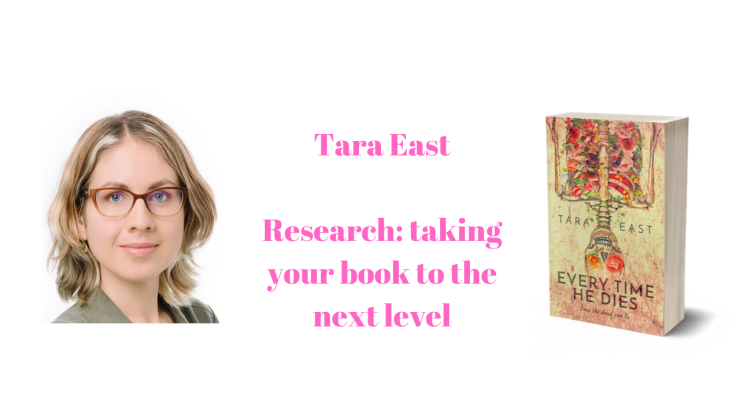
Dr Jay Ludowyke is an author and academic with a research focus on narrative nonfiction, objects and artefacts. She holds qualifications in writing, history and library services. Her writing has appeared Meniscus, Visible Ink and TEXT. Jay’s debut novel, Carpathia, was released earlier this year by Hachette.
Carpathia is a dual narrative that follows the Carpathia‘s legendary rescue of the Titanic survivors in 1912 and the discovery of the ship’s wreck nearly 100 years later.
Jay and I met two years ago at a writing saloon on the Sunshine Coast. At the time, she was completing a Doctorate at USC and I was completing a Masters. Jay’s intelligence, talent, and enormous generosity are obvious. Hearing about her debut novel Carpathia, I knew I wanted to have Jay on the blog. Being the generous person that she is, she agreed.
What drew you to the story of the Carpathia?
Jay: I first heard about Carpathia while watching an episode of Antiques Roadshow, a British television program where people bring in artefacts to be appraised by an expert. The program featured a commemorative medal presented to a crew member who served aboard Carpathia during the rescue of the Titanic’s survivors. The expert told the story of how Captain Arthur Rostron diverted steam from the ship’s heating and lighting, sending it back into Carpathia’s engines. Then they sailed full speed through the black night, directly towards icebergs, desperately trying to reach the stricken ocean liner.
Carpathia’s rescue mission was brave and heroic, but few people know this story, despite its connection to the most famous maritime disaster of the twentieth century. I have never liked tragedy, but I have always been drawn to heroism and nobility and romanticism, and Carpathia brings these elements to the Titanic story — at least for me. Her rescue mission captured my heart.
This year marks the one-hundred-year anniversary of the sinking of the Carpathia. Why do you think now is an important time for people to learn the story of the Carpathia?
Jay: We seem to have a fascination for centenary anniversaries — perhaps because so few humans reach this milestone. Carpathia was sunk by a U-boat while leading a convoy out of Liverpool during the final year of the First World War. Five men were killed that day — 17 July, 1918. In addition to the rescue of the Titanic’s survivors and her war service, Carpathia was built when the shipping industry was still transitioning from wind power to steam power, which coincided with a period of intense immigration from Europe to the United States. She was also one of Cunard’s first holiday cruisers, traversing the Mediterranean. In 2000, after several failed attempts, the National Underwater and Marine Agency (NUMA) located Carpathia’s wreck and she was subsequently dived by a group of amateur technical divers in 2001 and again in 2007 during an artefact salvage expedition, in one of the deepest ever UK wreck dives. Any one of these elements warrants mention in the historical record and their cumulative effect makes Carpathia a significant artefact of the twentieth century. So, the one-hundredth anniversary of her loss is the ideal time to commemorate her.

Your book alternates between the early 20th century and 2007 as you explore the history of the Carpathia and the recent discovery of her wreck. Was it difficult to construct a voice that could move between these two-time periods? Is that why you chose to use a narrative voice rather than a “standard” non-fiction voice?
Jay: I did have to contend with one significant issue of narrative voice while writing Carpathia. This was caused by using both an historical and contemporary timeline in alternating chapters. I felt that each timeline deserved a voice that accurately reflected the period and people within. For example, the historical chapters are written in a style that favours a lyrical voice, with a significant degree of detail and world building that gives verisimilitude to depictions of Edwardian society and life aboard steamships. However, the contemporary chapters dial back the lyricism, particularly since the protagonist here is a down-to-earth, plain-speaking firefighter from Manchester. It would have been a disservice (to him and to readers) to depict Ric Waring and the other men who dived Carpathia’s wreck with the lyrical voice used in the historical chapters — inauthentic to who they are and the way they speak. The key was to find a balance so that the two voices harmonised.
I used the genre of narrative nonfiction to write Carpathia because I wanted to tell people a story – albeit true. One that would captivate them. Too often, the ‘standard’ nonfiction voice to which you refer fails to engage a reader’s mind and emotions, because it focuses on recounting facts, figures and dates. That’s easy. Enlivening nonfiction is much harder.
Can you tell us about the research that was involved with this book? Both the historical research and your interactions with Ric Waring and his diving team.
Jay: So much research! Too much to list it all here, but among other things it involved reading
reference works (at first, with a dictionary in one hand to look up all the nautical terminology), locating primary sources, reading historical news accounts, contacting Titanic experts and maritime archaeologists, and interviewing the divers. I even visited Las Vegas specifically to attend a Titanic exhibition, and in New Zealand I went for a cruise on TSS Earnslaw, the only remaining coal-fired passenger ship in the southern hemisphere (where they allowed me into the normally restricted engine room and let me throw some coal in the boiler’s furnace, and to visit the bridge and steer the ship!)
I also went on a research trip to the United Kingdom, which was funded by the University of the Sunshine Coast. This involved visits to multiple information repositories. The major ones included, in London: The National Archives, and the National Maritime Museum; in Liverpool: the University of Liverpool, and the Merseyside Maritime Museum; in Newcastle: the Tyne and Wear Archives, and the Segedunum Roman Fort and Museum; and in Belfast: the Titanic Belfast Museum and Slipways. Because it was winter in England, the nights were long and it was always dark when I entered and exited the archives. For weeks, it was like living in perpetual night. While researching Carpathia, I remember missing the sun for the first time in my life.
In Manchester, I stayed with Ric Waring and interviewed him about his experiences diving Carpathia. Ric was very patient with me, because at that stage I knew next to nothing about any kind of diving, much less technical diving – the kind of deep diving required to dive Carpathia – which is highly specialised and very dangerous. The rest of the team also shared stories with me, but because they were spread over the UK, Italy and Germany, I focused on Ric, who was the 2007 expedition leader. I was quite nervous about meeting him, but he was welcoming and very forthright about his experiences — the good, the bad and the funny.

What were some of the most interesting facts you uncovered during your research?
One of the most interesting archival documents I located was a letter written by Charles H. Marshall to Cunard, concerning the naming of Carpathia. This was quite extraordinary because Marshall was actually a passenger aboard Carpathia when she went to rescue the Titanic’s survivors, amongst whom were three of his grown nieces!
I also found records and photographs indicating that 2,000-year-old stones from Hadrian’s Wall, a UNESCO world-heritage listed Roman site, were displayed in a glass case aboard Carpathia. In the book, the stones are portrayed as her sunken treasure. Previously, I’d only ever seen brief mentions that the end of Hadrian’s Wall had been found in the shipyard while Carpathia was being built — never that the stones were placed aboard her.
Finally, after a great deal of time and effort, I uncovered the real name of the baby born on Carpathia’s maiden voyage and heretofore known only as ‘Carpathius’ — but I’m not going to spoil that scene by revealing the name here!
What challenges did you encounter while writing a historical non-fiction narrative?
I love history and I wanted to tell the reader absolutely every interesting thing I discovered. And I thought everything was interesting! When I send an early draft to my supervisor, Dr Ross Watkins, he, very constructively, told me it was boring. I’d forsaken the story in favour of reciting facts — the antithesis of what I was trying to achieve when I chose narrative nonfiction as my genre. When I became aware of the problem, it was still incredibly difficult to resolve because I struggled against privileging my desires over the needs of the narrative. In the end, I had to reconcile myself to writing drafts that were factually overwritten. I could only resolve this kind of overwriting during the editing process, after giving myself time and distance so I could evaluate the text more objectively. Only then, could I ‘kill my darling’ extraneous facts.
Can you tell us a little bit about your routine? Are you a morning person or night person? Do you write every day? Do you research and write at the same time? Do you outline?
Jay: I won’t start writing until I’m satisfied I’ve done enough preliminary research — that’s not to say all the research will be done before I put fingers to keyboard – far from it, but I’m a plotter and I need to know my organising structure (or at least the beginning, conflict, climax and ending) before I begin. This gives me direction. Once I start writing, I’m still always researching, but then I’m seeking the type of information needed to construct scenes and create verisimilitude. I work best during the day, which can be a little difficult since I’m also a night owl. When I’m at the writing stage of a project, I treat it like a job and do it every day.
There are two strategies I found particularly useful for writing historical nonfiction. During the research stage I created a detailed timeline of events relating to Carpathia. I compiled the information from the many sources I consulted, adding fact after fact to create a more comprehensive history of her than any single source offered. It was extraordinarily useful to have a chronological timeline that I could refer to, even though the book’s plot is not structured chronologically. The timeline was fully referenced so that I always knew from where the information came. Then, when writing the book, I used footnotes (always intending to remove them in the finished version) to continue to maintain that link with the original source. This was a huge help when my editor was fact checking, and I had to confirm the validity of something that was being queried.
I usually only do a written outline if I have a limited word count. I’ll note what I need to achieve per 500 or 1,000 words, so that I don’t hit my limit and discover that I’m only half done with no words left. If there is no word limit (or its several tens of thousands), most commonly, I just begin writing. This is because by the time I’m ready to begin I always have a mental plan and know where I’m going to start. Things usually flow organically from there, because of the mulling I’ve done beforehand. Then, at about the halfway mark, I’ll assess what I’ve done, make a list of scenes I still need to write (I have a better idea of them by this point) and continue. After completing a chapter I’ll often do a one-paragraph summary so that I don’t forget what I wrote in that chapter or what threads I’ve left hanging. Excepting major plot points, I usually work out the details of a scene during the act of writing. It’s part instinctual, but always informed by that preliminary research and mulling.
If you would like to find out more about Jay, all her contact details are below. Carpathia is available in bookstores now or can purchase directly here.
Dr Jay Ludowyke
Email: jay@jayludowyke.com
Website: www.jayludowyke.com
Twitter: @JayLudowyke
Facebook: JayLudowykeAuthor












 While you’re here, be sure to
While you’re here, be sure to 
 While you’re here, be sure to
While you’re here, be sure to 







